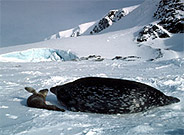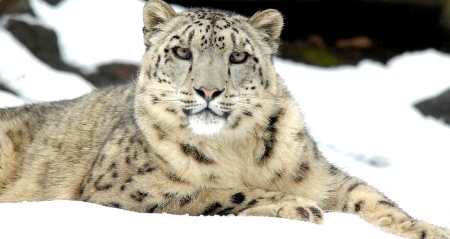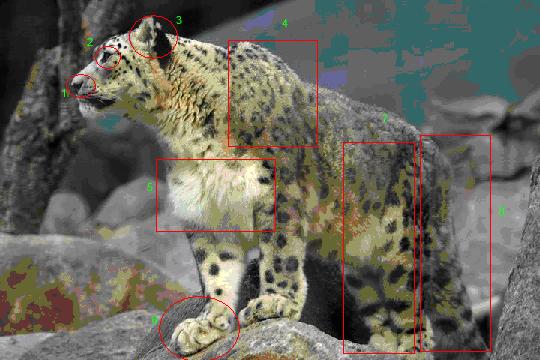What is the adaptation to seal & snow leapord?
Animal | Anatomical adaptations | Behavioural adaptations | Physiological adaptations |
 Weddell Seal - more Leptonychotes wedelli The most southerly dwelling of all mammals. Live at the edge of pack ice wherever there is a breathing hole or tide crack. |
Region 1- (the nasal cavity) - snow leopards have a deep nasal cavity and a large chest which helps the animal breath at the high altitudes. Not only, is the nasal cavity deep but it also has specialized sinus passages which warms the cold air before it enters the lungs.
Region 2- (eyes)- snow leopards have great eye sight, with the ability to see six times better than humans can. Their magnificent eye sight allows them to more easily spot prey.
Region 3- (ears)- These cats have rather small ears which have the ability to flatten out making it easier to conceal themselves behind rocks to stalk prey. These small ears also let less heat escape from their bodies allowing them to stay warmer.
Region 4- (shoulders)- snow leopards have incredibly strong shoulders muscles that help them climb the steep cliffs and big rocks that cover their habitat.
Region 5- (fur on underbelly)- the fur seen on the underbelly of a snow leopard can reach up to 3 inches long. This long hair forms a wooly undercoat which traps heat and keeps the cat warm.
Region 6- (paws)- The front paws of the snow leopard are large than those in back. These big “snow shoes” help the snow leopard from falling through soft snow.  The pads on the paws are very thick and covered with fur to aid in warmth and friction to keep them steady. The combination of thickly padded paws and fur also keeps the snow leopard’s paws from being hurt by the sharp rocks.
The pads on the paws are very thick and covered with fur to aid in warmth and friction to keep them steady. The combination of thickly padded paws and fur also keeps the snow leopard’s paws from being hurt by the sharp rocks.
Region 7- (hind legs)- The hind legs of these cats are very muscular. Strong hind legs are necessary to complete wide jumps between ledges. Due to these powerful legs snow leopards are able to jump a distance of 45 feet from one ledge to another.
Region 8- (tail)- These cats are different from other cats in that it’s muscular tail can be the length of it’s body. The tail acts as a ruttier for the cat helping with balance. When the tail it not being used in balance it aids in warmth. When a snow leopard rests it wraps the long fluffy tail around it’s body to keep warm.



